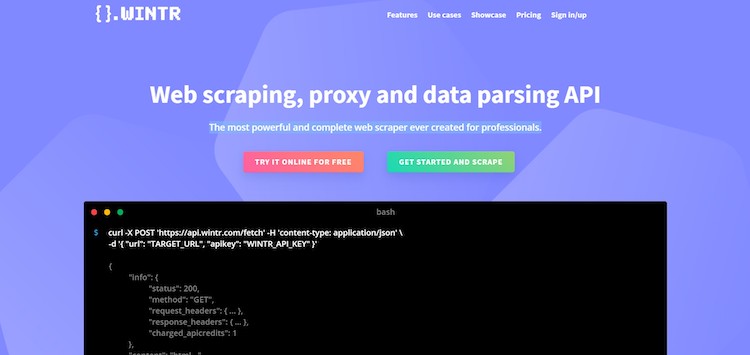Scrapy is a fast high-level web crawling and web scraping framework, usedto crawl websites and extract structured data from their pages. It can be usedfor a wide range of purposes, from data mining to monitoring and automatedtesting.
Performing Browser Automation With Edge And Selenium In Python. Let us see what are the prerequisites to use Edge with Selenium and Python for browser automation. Learn how to perform web scraping at scale by preventing websites to ban your ip address while scraping them using different proxy methods in Python. Browse other questions tagged python csv web-scraping automation beautifulsoup or ask your own question. The Overflow Blog Mint: A new language designed for building single page applications. Level Up: Creative coding with p5.js – part 3. Featured on Meta Stack Overflow for Teams is now free for up to 50 users, forever.
Getting help¶
Having trouble? We’d like to help!
Try the FAQ – it’s got answers to some common questions.
Looking for specific information? Try the Index or Module Index.
Ask or search questions in StackOverflow using the scrapy tag.
Ask or search questions in the Scrapy subreddit.
Search for questions on the archives of the scrapy-users mailing list.
Ask a question in the #scrapy IRC channel,
Report bugs with Scrapy in our issue tracker.
First steps¶
Understand what Scrapy is and how it can help you.
Get Scrapy installed on your computer.
Write your first Scrapy project.
Learn more by playing with a pre-made Scrapy project.
Basic concepts¶
Learn about the command-line tool used to manage your Scrapy project.
Write the rules to crawl your websites.
Extract the data from web pages using XPath.
Test your extraction code in an interactive environment.
Define the data you want to scrape.
Populate your items with the extracted data.
Post-process and store your scraped data.

Output your scraped data using different formats and storages.
Understand the classes used to represent HTTP requests and responses.
Convenient classes to extract links to follow from pages.
Learn how to configure Scrapy and see all .
See all available exceptions and their meaning.
Built-in services¶
Learn how to use Python’s builtin logging on Scrapy.
Collect statistics about your scraping crawler.
Send email notifications when certain events occur.

Inspect a running crawler using a built-in Python console.
Monitor and control a crawler using a web service.
Solving specific problems¶

Get answers to most frequently asked questions.
Learn how to debug common problems of your Scrapy spider.
Learn how to use contracts for testing your spiders.
Get familiar with some Scrapy common practices.
Tune Scrapy for crawling a lot domains in parallel.
Learn how to scrape with your browser’s developer tools.
Read webpage data that is loaded dynamically.
Learn how to find and get rid of memory leaks in your crawler.
Download files and/or images associated with your scraped items.
Deploying your Scrapy spiders and run them in a remote server.
Adjust crawl rate dynamically based on load.
Check how Scrapy performs on your hardware.
Learn how to pause and resume crawls for large spiders.
Use the coroutine syntax.
Use asyncio and asyncio-powered libraries.
Extending Scrapy¶
Understand the Scrapy architecture.
Customize how pages get requested and downloaded.
Customize the input and output of your spiders.
Extend Scrapy with your custom functionality
Use it on extensions and middlewares to extend Scrapy functionality
See all available signals and how to work with them.
Quickly export your scraped items to a file (XML, CSV, etc).
All the rest¶
See what has changed in recent Scrapy versions.
Learn how to contribute to the Scrapy project.
Python Web Scraping Tools
Basic Web Scraping In Python
Understand Scrapy versioning and API stability.
